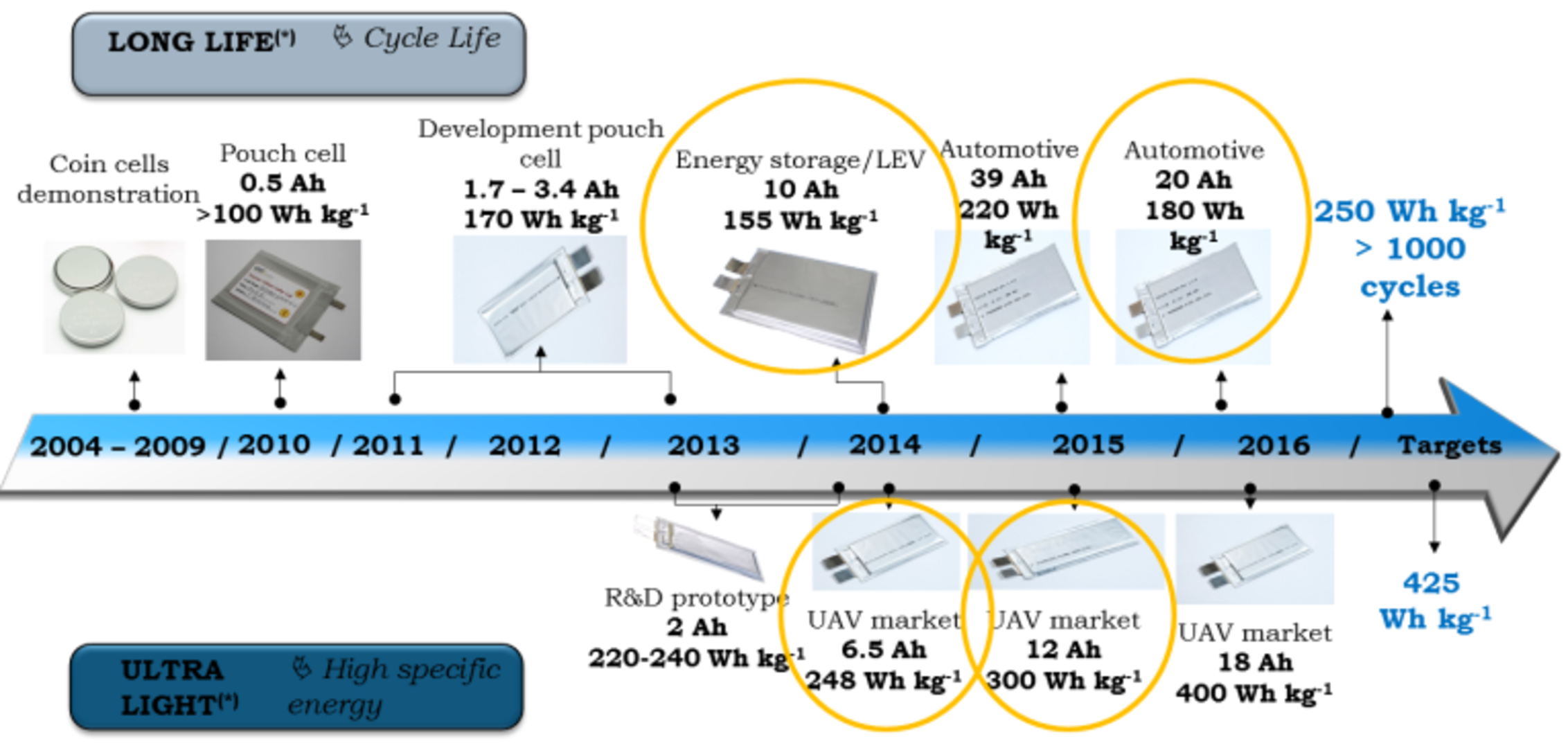High Specific Energy Lithium Sulfur cell for Space applications
| Programme: | TRP ITI | Current TRL: | 3 |
| Reference: | B00016905 | Closure: | 2017 |
| Contractor(s): | Airbus DS (FR), Oxis Energy (UK) | ||
Lithium Sulfur technology was identified by Airbus Defence & Space as the new promising technology enabling energy storage with very high specific energy capability, which will benefit many Space applications. This technology shows many key advantages like: lightness, safety, temperature tolerance or environmentally friendly, and has significantly evolved in the past years. It was unknown if such technology could suit Space applications.
Objectives
To develop Lithium Sulfur batteries cells with higher electrical performances than state-of-the-art, to have components that can endure space requirements and to develop a partnership with a new European batteries manufacturer for future collaboration and production.

Achievements and status
After establishing a Li-S state of the art, Airbus provided space requirements for battery cells. Oxis Energy delivered four different batches of two cell models (Ultra-light and Long-life cells) in order to check the potential evolution of the technology. The cells were tested at the Electrical Laboratory of Airbus in Toulouse.
Almost all the objectives of this study have been reached: increased specific energy (306 Wh/kg compared to the initial objective of 350 Wh/kg), better behavior under temperature and C-rate tests and reduced internal resistance. LiS cells passed almost all the launcher profiles without problems, cyclability remains however the biggest challenge. Oxis Energy is now a well-known partner in several European studies.
It has to be noticed that the cells tested were prototypes, and the number of samples not enough to be categorical with the conclusions. The results should therefore be considered as preliminary.
Benefits
Despite the limitations to this moment, Li-S battery technology shows a great potential for many space applications like launchers or LEO satellite missions. Performances regarding cycling, rate capability and temperature need to be however further improved.
Li-S technology is just at the beginning and already shows great potential and constant evolution. The results of the tests performed during this ITI are encouraging and suggest that Li-S might become the next generation of energy storage.
Next steps
Different options for further studies: to use LiS cells to be commercialized with higher TRL and qualify them or to work on the electrochemistry of current prototypes in order to increase the specific energy and the cycleability for space applications. A new ITI could be a potential follow up activity.


